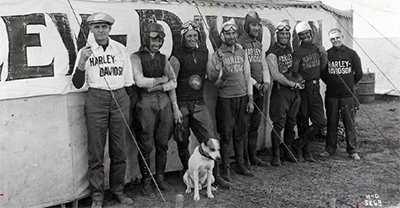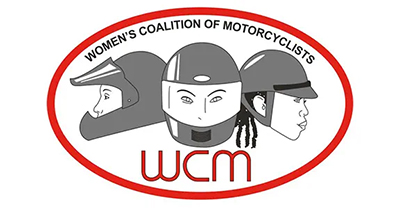One of the youngest members of Harley-Davidson’s race team, Irving Janke was a local Milwaukeean.
Born in 1896, Janke started riding at about 13 years old, and it wasn’t long before he was a well-known figure in the area’s motorcycle scene. A member of the Milwaukee Motorcycle Club, Janke earned the ‘neatest driver’ title from the Milwaukee Journal’s annual three-day motorcycle tour in 1913, 1914, and 1915.
During that time, he also joined the Milwaukee Motorcycle Club. But during this time, he’d started to make waves as a speedster, too.
TURNING PROFESSIONAL
Janke was an established amateur racer by age 17. Shortly after his 18th birthday in 1914, a Milwaukee Sentinel newspaper article stated he had been arrested and wasn’t allowed to ride until he paid fines for five road violations on his motorcycle, three of which were speeding.
Sometime later that year, he entered his first professional race and joined the newly formed Harley-Davidson race team, alongside other would-be legendary riders such as Red Parkhurst and Ray Weishaar.
Janke’s first big triumph seems to be when he earned third place in the Vanderbilt Cup in Savannah, Georgia that November.
“The terrific speed made by the Milwaukee youngster melted spark plugs as fast as they could be put in,” wrote The Atlanta Constitution about the event’s youngest competitor.
SETTING RACING RECORDS
In 1915, he set a record at the Summit Hill Climb in Uniontown, Pennsylvania. “The fair-haired Milwaukeean got away to a fine start and the ease with which he swayed around the bad turns on the course brought gasps of admiration from the spectators. ‘Look at that kid go,’ they said, and they could see that the little blonde youngster on the gray tornado was sweeping up that hill for the best time of the day,” reported The Harley-Davidson Dealer magazine.
Tackling the treacherous hill in just 3 minutes and 16 seconds—smashing the previous record of 3 minutes and 49 seconds—Janke reportedly still held the record at the time of his death in 1957.
The next year, Janke etched his name in the record books once more, this time outshining some of the best racers in the world in Dodge City. Press coverage at the time noted that Dodge City speedway was considered the fastest track in the United States, drawing around 17,000 people to the July 4th spectacle where Janke averaged 79.5 mph to win the race.
While racing, Janke also worked for the Motor Company as a motorcycle tester. He appeared in numerous marketing and product photos from the period as well. He was with the Motor Company through 1920.
WORKING FOR THE MILWAUKEE POLICE
In 1921, at the same time that H-D was winding down its company race team, Janke left to work for the Milwaukee police—as a motorcycle officer, of course.
“Mr. Janke reminisced in 1940 that he was a ‘frisky’ lad during his early days on the police force and sometimes startled onlookers by riding his motorcycle while standing on the seat,” published the Milwaukee Journal in 1957.
After 11 years, Janke then moved to Milwaukee County, where he worked as a Deputy Sheriff until 1954 when he retired to Florida. He died three years later, and although he’d long been out of the racing game, his death was reported in both American Motorcycling and The Enthusiast magazines.
His obituaries touted his police career as well as his days as a “world champion motorcycle racer and daredevil rider” (Milwaukee Journal, Jan 28, 1957).

A pig wasn’t the only animal on the track with H-D! Learn more about the other photogenic animals found in the Harley-Davidson mascot archives.

Alfonso Sotomayor was the first motorcyclist inducted into the Mexican Motorcycling Hall of Fame in 1978. Learn more about this “police officer stunt man”.

The future of motorcycle riding is female, according to new data from the Motorcycle Industry Council. As a wave of women riders enters the sport, the Women’s Coalition of Motorcyclists is working to make motorcycle riding more accessible to women. Learn how they’re paving an open road for women riders.



